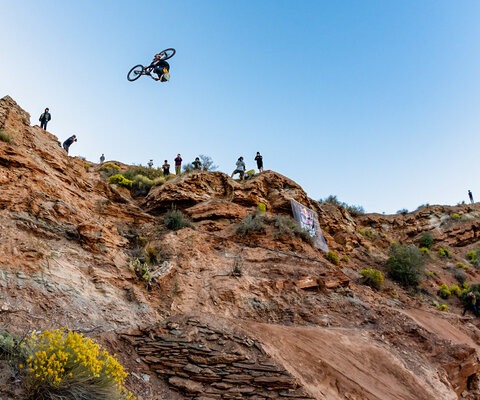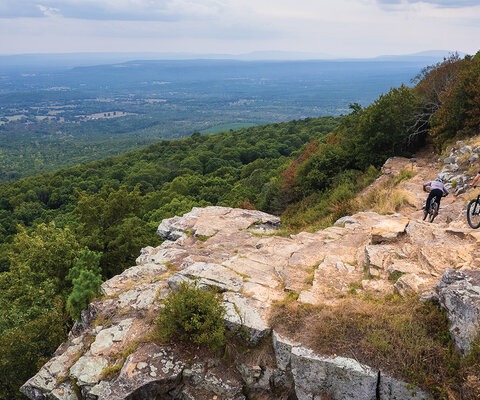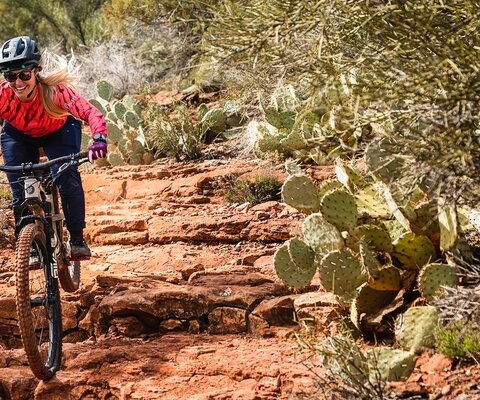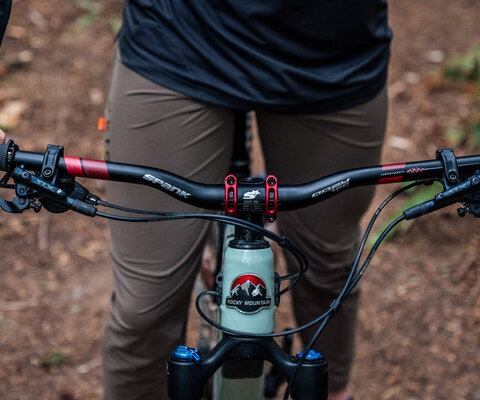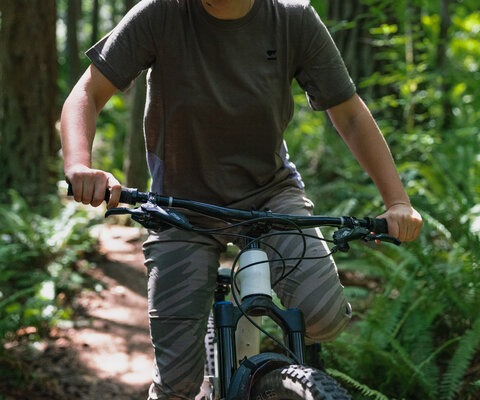
Wild West Renegade Roots and Tough as Nails Terrain in Sedona
Words by Hilary Oliver
The Wild West is still alive in sizzling Sedona, AZ—at least on its mountain bike trails.
Singletrack as burly as you can find anywhere web out from town like a tangled dreamcatcher—some of them legitimate Forest Service trails, many of them secret tracks built by intrepid riders. They tell the long story of mountain bikers in the area, and their quest to find the greatest places to ride in the seemingly endless desert terrain.
As in any frontier town, Sedona’s mountain bikers have had their struggle with the law. But their crown-jewel Hangover Trail—approved by the Forest Service late last year after a decade of increasing popularity—is a touchstone of newfound cooperation. Named for the trail’s terraced pathway along overhanging cliff walls, not its builder’s post-party pain, Hangover is a double-black-diamond classic and a symbol of a new era in the town’s storied fat-tire history. A history that’s really just beginning.
There’s something Daliesque about Sedona’s trail systems. The mind-warping scale of the red buttes and the winding, eternally up-and-down singletrack feel like they’re constructed for the purpose of getting out-of-towners lost. That’s because they were created from a lust for adventure—from the eternal question: What kind of rad feature will we find to ride over there?
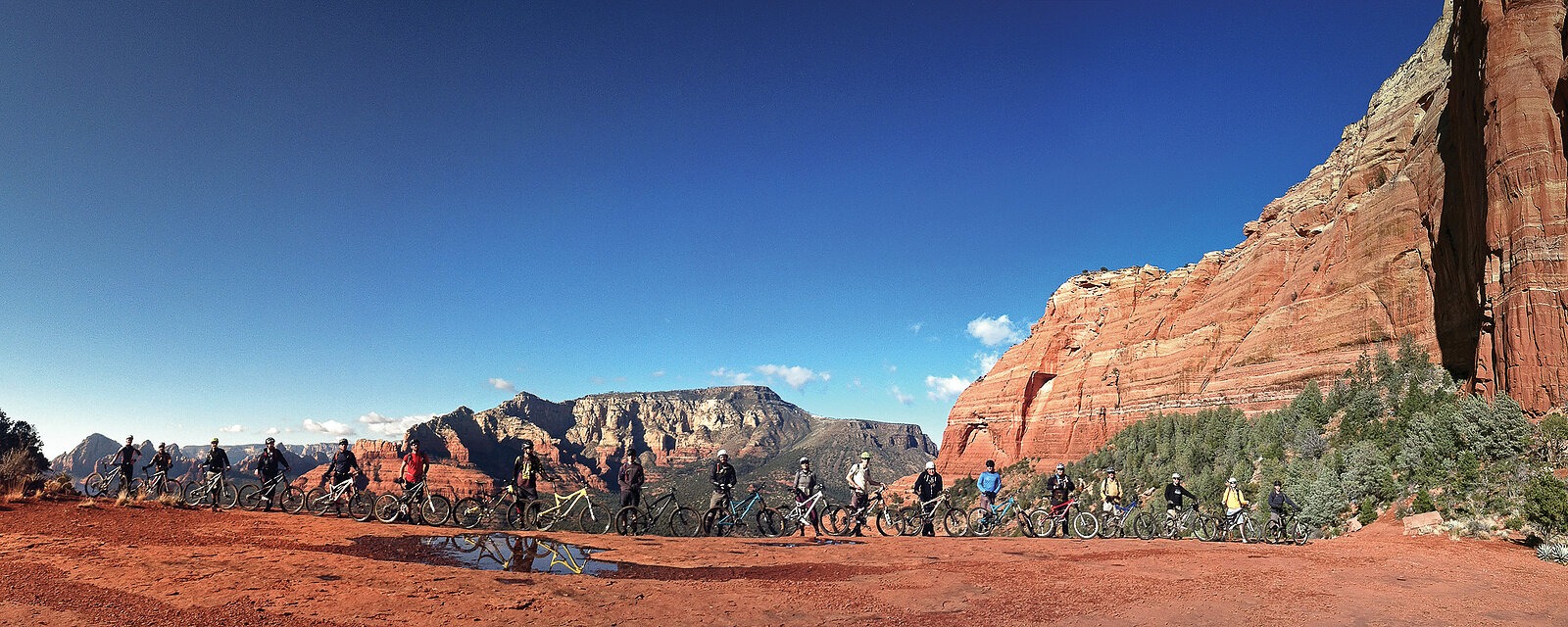
From the beginning of mountain biking in Sedona, the beautiful, brutal terrain has produced mountain bikers who ride hard and go big. “It would be a bunch of us going out, strapping all our gear on, and basically finding stuff to huck ourselves off of,” says Lars Romig, who’s been riding in Sedona for 12 years and now serves as president of the Verde Valley Cyclists Coalition (VVCC), an advocacy group that’s working hard to promote and preserve the area’s trails. Romig cut his teeth as a teenage BMX racer before converting to mountain biking, and that aggressive style infused the popular group rides he began to join, leaving from the Sedona Bike & Bean in search of freeride fun.
From the beginning of mountain biking in Sedona, the beautiful, brutal terrain has produced mountain bikers who ride hard and go big.
An even earlier group ride—more laid-back and adventure-oriented in style—originated from the now-defunct shop Mountain Bike Heaven (MBH), opened in 1989 by “Rama” Jon Cogan, today president of Sedona Mountain Bike Club. The MBH rides were often punctuated by smoke...er, headset-adjustment breaks, and the regulars formed such a colorful crew that Cogan later captured their story in his book The Rise of the Gnarly Crew. “Both [of the early mechanics at MBH] were works of art and led me to believe that our biking community was beginning to form out of the misfits of society,” he scribes, “and that meant a lot when you consider that Sedona is the largest outpatient mental care facility on the face of the planet.” The MBH group still rides today, with some of the original members who rode together more than 20 years ago.
Cogan himself was a member of the rebellious Sedona 5, the group of mountain bikers who captured national attention in 1995 when they attempted to bike through Grand Canyon National Park, strictly off-limits to bikers, only to be caught and incarcerated deep beneath the rim.
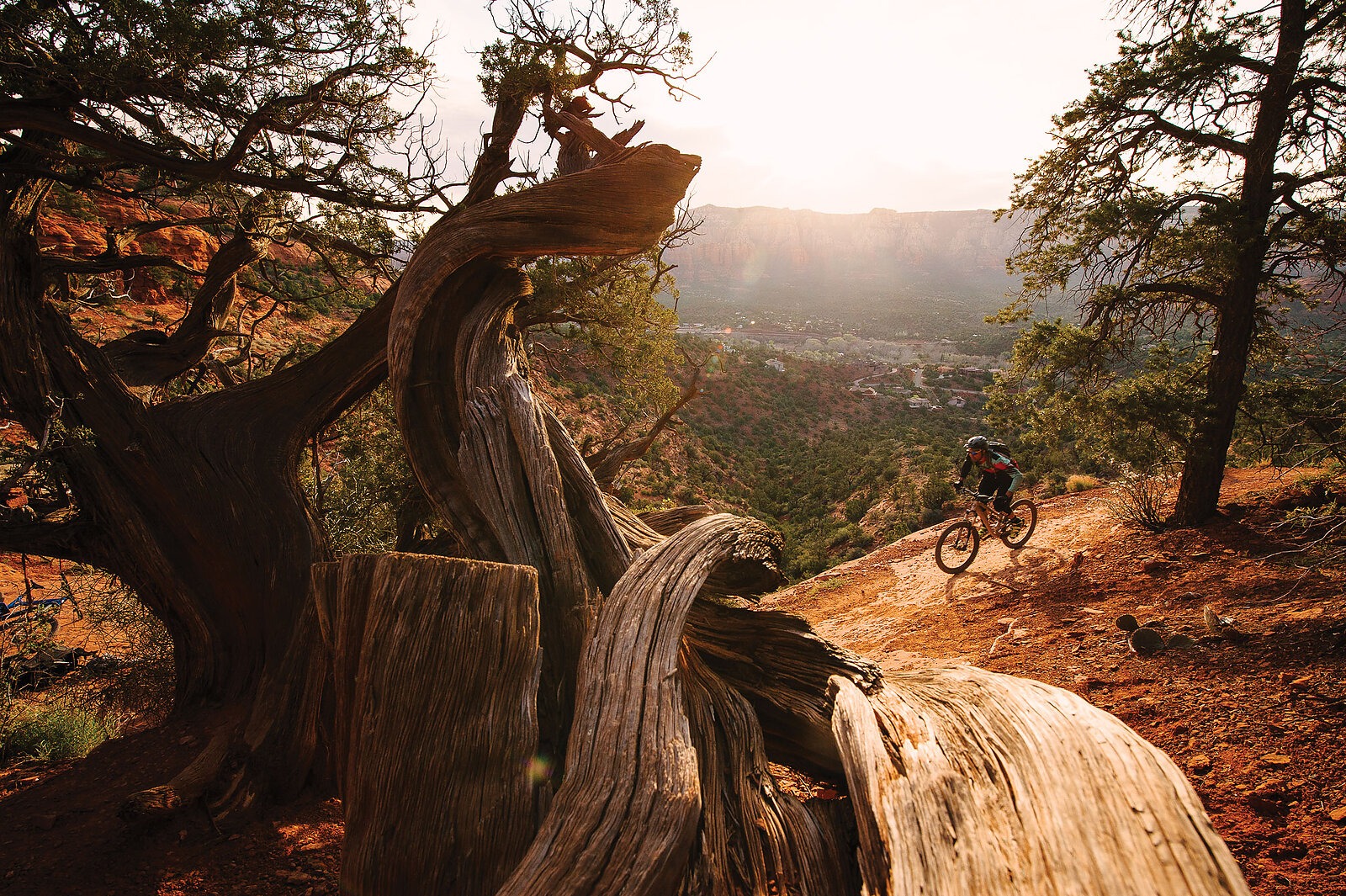
From those early decades of Sedona mountain biking arose an eat-or-be-eaten combination of tough, unsigned, unsanctioned trail labyrinths and aggressive local riders. Without the abundance of mining roads or Jeep tracks common to most desert destinations, Sedona’s trails were either worn in by group rides or built by a small handful of shovel-wielding mountain bikers—who didn’t waste their time with boring trails.
"As local riders, we used to take out-of-towners on our favorite trails, but that has changed as we now understand our baseline is usually far above the visitors. I see far less of us locals throwing visitors in the deep end,” says Romig. “This terrain breeds really good riders. You can’t just send your average rider from the Midwest out onto the Hangover.”
Indeed, when you Google “Hangover Trail,” the first result is a video titled, “Hangover trail with near death crash,” featuring a POV-clad rider grinding along the trail’s namesake narrow ledges for a few minutes before going over teakettle and landing halfway over the edge, grasping to roots and rocks above the precipitous drop until his buddies tug him back up onto the trail. Cogan says Hangover, constructed 10 years ago, is a classic in the style of its builder, a local rider older than Cogan—himself 57—who prefers to fly under the radar.
Sedona riders pride themselves on trails that haven’t been dumbed down to be accessible to every rider. But as the area’s gnarly rider-built trails began to see more traffic, issues with erosion, sustainability and lost tourists drew the ire of local land managers.

As word got out about Sedona’s prime desert singletrack, out-of-town cars with bike racks became increasingly common sights. Yet without signage or high-quality maps, Sedona’s killer riding required either a guiding local or super solid beta. It was all too easy—and dangerous—to get lost on one of the many connector trails between and amongst seemingly identical bluffs and canyons.
The more traffic the user-built trails saw, the more issues of sustainability became apparent. “This area has some of the most sensitive soil,” says Jennifer Burns, recreation staff officer for the Red Rock Ranger District. “It’s just dust. It’s very erosive, so if you don’t build a trail well, it’s a disaster.”
Mountain biking faces another particular challenge in the National Forest surrounding Sedona: “The forest plan [which dictates how the land is officially managed] doesn’t support building things specifically for sport,” Burns says. “Our forest plan emphasizes quiet, contemplative trail experiences.”
It was all too easy—and dangerous—to get lost on one of the many connector trails between and amongst seemingly identical bluffs and canyons.

Five or six years ago, if the Forest Service found a new trail being constructed, they would rip it up, she explains. “But it would come back. There was this unproductive battle going on.”
When Burns—a mountain biker herself—joined the district four years ago, mountain bikers gained a key advocate. “I have to admit that, in years past, the Forest Service hadn’t really enhanced or built trails,” she says. “But the mountain biking was growing, the demand was growing. We had catching up to do when I got here.”
The Forest Service began the slow process of addressing the massive network of unofficial trails, collecting feedback about the most beloved trails and considering their effects on local biology, archeology and hydrology.
Working heavily with local advocates like the VVCC, the Forest Service laid out an initial list of trails to adopt into the official USFS system, almost all of which have now been adopted—including the iconic Hangover.

And for a town that’s looming larger on the mountain-bike map, its locals’ humble, live-to-ride attitudes continue to run deep.
It might be that magic combination of renegade roots, tough-as-nails terrain and the stamp of official approval that has drawn the big boys and girls of the industry to Sedona recently. Trek launched its new models for media in Sedona this summer, and Santa Cruz Bicycles introduced its rave-reviewed Tallboy in the area last year.
And for a town that’s looming larger on the mountain-bike map, its locals’ humble, live-to-ride attitudes continue to run deep. Over horchata and burritos at Tortas De Fuego with Romig, along with Jason First (co-owner of Sedona’s Over The Edge Sports), and Chris Reichel of Drunkcyclist.com—both longtime area riders—the conversation is spiced more with tales of DIY-style bikepacking adventures and excitement over newly approved singletrack than braggadocio.
The issues around access and legitimizing trails linger, though. This summer the Sedona Mountain Bike Club lost its IMBA chapter status after the two clubs realized they shared little common philosophy on advocacy tactics, according to IMBA. The tension was magnified when the Forest Service issued an order limiting mountain bikers from certain areas to mitigate damage and properly plan for future routes. “Our club was pretty defiant,” Cogan says. The club put a petition online calling the closures discrimination before IMBA or other groups felt like they had a chance to weigh in. The SMBC wasn’t willing to wait for the Forest Service to approve trails; IMBA and VVCC, while against the closures, wished to work through them with the goal of sustainable trail network growth. “It drove in a wedge,” says Romig, who regularly still rides with some from SMBC, “between the more rebel group and the more cooperative group.”
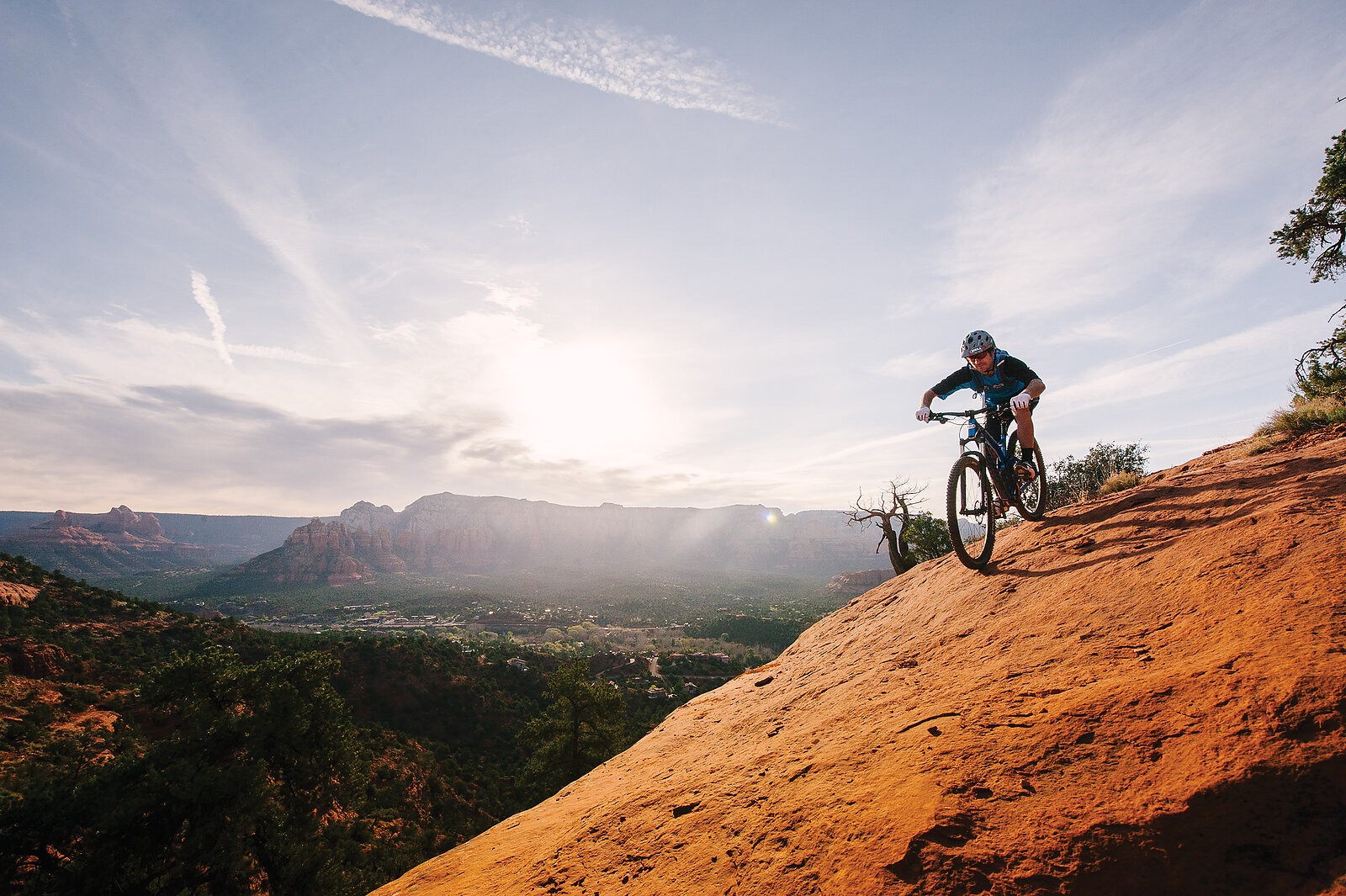
Burns may be right when she says the future of mountain biking is unresolved in Sedona. That future will depend on funding and crews for maintenance.
Still, Sedona’s advocacy efforts continue to translate into celebrated results. A grant authored by Romig recently achieved funding for improvements to the beloved Hog trail system. Shortly after that, the Sedona City Counsel approved the proposal of a 13-acre bike park at Posse Grounds, which will host freeride features, a pumptrack, a skills area, and all levels of trails.
“There has been a lot of change in the last two years, and we’re headed in the right direction,” says First. The Hangover trail, he says, is evidence: “It’s the ultimate symbol of Sedona trail riding, and the Forest Service deserves major recognition for adopting a trail like that.”
In a town where working with the Forest Service has been both productive and perhaps felt to a certain few like selling out, it may take a bit more time to shed the Wild West image. Then again, with hundreds of miles of world-class singletrack and nearly a million trail users a year, it’s all part of the magic combination that makes up Sedona’s ultimate mountain biking allure.
